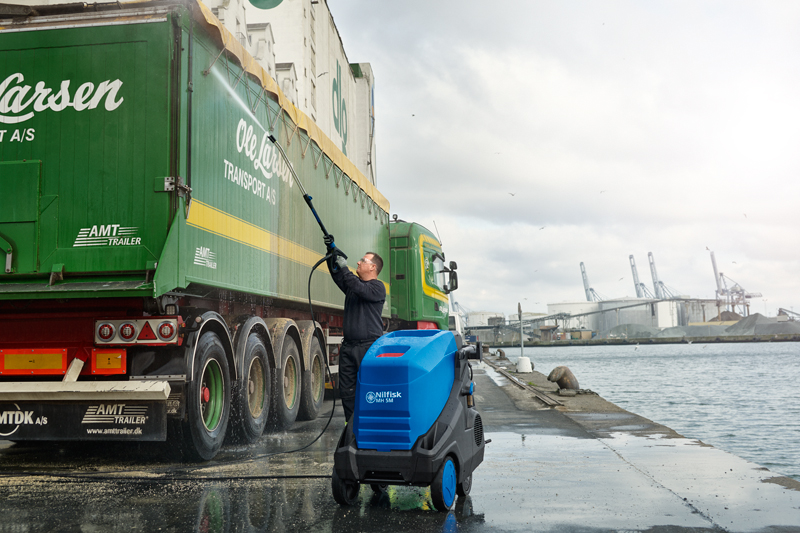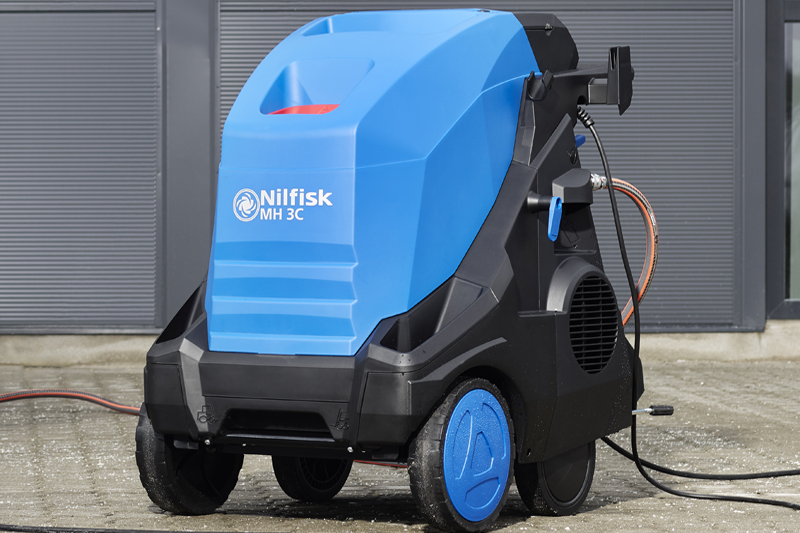
Nilfisk, manufacturer of commercial and industrial cleaning equipment, gives us its top tips for cleaning vehicles while avoiding damage.
With rising insurance costs and ever greater social media exposure from dissatisfied customers, it is critical to reduce potential damage to vehicles during the cleaning process. Mistakes, be they mechanical or human error, can be very expensive.
Pre-wash and pre-spray
It is critical that as much dirt as possible is removed before any hands are placed on the vehicle. Any particles dragged along the surface of the vehicle will damage the paint work. A pressure washer is ideal for this, but be careful not to stand too close – a minimum distance of 30cm is ideal. It is good practice to point the water hose to the floor, stabilising the force of the flow before contact is made. Pre-spraying with a detergent liquid or foam is recommended, but never use a pressure washer on paintwork that is flaking or rusty.
Understand your attachments
Using the right attachment can help to lift dirt. A soft, long bristled brush is ideal for the bodywork, whilst a rotary brush will assist in getting into awkward areas like front grills, bumpers and wheels. A detergent nozzle will allow you to spray your vehicle with a mixture of water and mild pressure washer detergent. This is particularly good at cutting through grime and oily stains.
A wand extension will help you reach over the roof of high vehicles, accessing the bits that often get missed by a sponge. Never use a ‘turbo’ or unrestricted nozzle on your pressure washer, as irreversible damage can occur to paintwork and rubber seals.

Avoid the engine block
Never point the pressure washer into the engine block or any other working components, including the vehicle aerial. Many experts agree that a well maintained engine block encourages technicians to take more care when servicing, but don’t clean it with a pressure washer!
Wheels and hubcaps
Alloy wheels and hubcaps are the biggest collector of grit, dust and oil from road surfaces. Begin as you would with the bodywork by using the main nozzle of the pressure washer to remove loose debris and immediate dirt. Then use the detergent nozzle to break down oil residue and then the rotary brush to lift the difficult stains and get into awkward corners. Rinse thoroughly with plain water to remove all excess detergent, but avoid aiming the pressure washer at the tyres to avoid damage to tread or the tyre wall.
Hot or cold?
Most of the time cold water delivered at pressure will do the job, but if oil or grease are present hot water will be much faster and cost effective. Independent tests have proven that cleaning time, and the associated labour cost, can be significantly reduced if hot water is used. Whole life running costs, including purchase price, labour, water, fuel and service elements can be reduced by 26% compared to cold water only. Whether hot or cold, the option for instant detergent cleaning should only be a button push away.
When selecting hot pressure washers look for models with eco-friendly boilers, as power consumption will be significantly lower. The Nilfisk MH range provide up to 210 bars of pressure at 90 degrees and heat the water with EcoPower boilers recognised and approved by EUnited. An EcoMode function allows cleaning at 60 degrees with further fuel savings and excellent results.
Manoeuvrability
Additionally, when choosing a pressure washer, pay attention to the machine’s centre of gravity, as it will affect how easy the unit is to pull or push, especially on uneven surfaces. Manoeuvrability is critical within a busy, time pressured facility. The Nilfisk MH range features a four-wheel design which is very easy to tip and steer from left to right, with transport being aided by a handy footplate at the rear.








